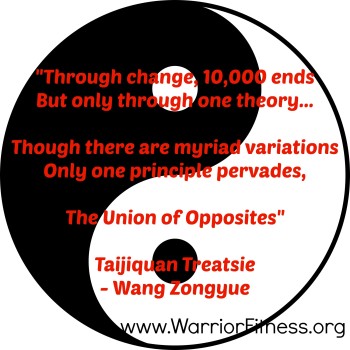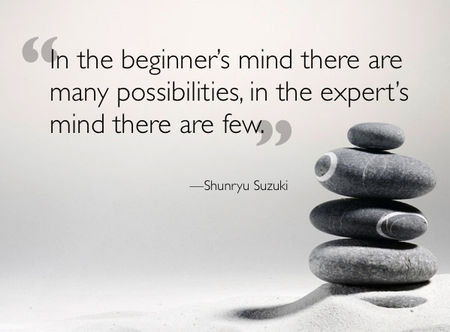Make sure you read the highly controversial Part 1,Weakest Direction Theory is BS, before moving on to part 2 below…
Preface
I love martial arts. I love everything about it. I love training martial arts, practicing martial arts, teaching martial arts. I love reading martial arts history, philosophy, even martial arts fiction. I love talking about martial arts. I love writing about martial arts. Are you getting the picture yet? Have I pre-framed this well enough for you?
With all I love about martial arts, there is one thing about it that sometimes I can’t stand. In fact, sometimes it drives me absolutely bat-shit crazy (yes, that’s a technical term). Do you know what it is about martial arts that sometimes makes me want to pull out the little hair I have left on my head?
The Martial Artists Themselves!
Yes, the very people practicing the arts I love drive me nuts. And yes, I am including myself too since I have been a martial artist for over 30 years. Before I continue this rant, let me back up a little bit. Many of my best friends are martial artists. People who train in the warrior arts are some of the finest, most generous, giving, intelligent, caring people I know.
But, we can also be quite stubborn, close-minded, and well, pig-headed, especially when confronted with new information that challenges our strongly held perceptions of how things in the budo world should be.
For all our Zen talk about emptying our cup, we have some of the fullest cups around.
When we meet something or someone that shakes the budo boat, we want to throw it overboard for fear of disturbing our calm and peaceful seas. Faced with threatening new information, like Internal Power Training for example, we try so very hard to deny and disprove it that there literally is no room in our head space to even attempt to understand it.

The concepts of Internal Power Training that I have been introducing in several blog posts now, culminating with part 1 of this post, Weakest Direction Theory is BS, will revolutionize and utterly transform your martial arts practice, if you let it. Check out the Integrated Strength Program for a complete course on the subject!
Q & A on Biotensegrity and Internal Power Training
So, I took some of the more relevant feedback, questions and comments I received from the last post and put it into a Q&A format. If there are questions or clarifications needed, please let me know!
Q: If your new theory of body as an omni-directional structure is correct and force can be diffused throughout it, then how do arts like Bujinkan Budo Taijutsu or Aikido, or Jujutsu work since everyone applies leverage and successfully utilizes the weakest direction theory all the time?
A: The answer is much simpler than you would believe. It works because the people who actually possess these skills AND can use them are very, very few and far between. It’s just not taught (much) in budo. Yet it has been the thing that has created some of the top budo men of all time. The founder of Katori Shinto Ryu stated – “once I understood 6 directions, my ken became unstoppable.” 400 years later, Takeda, Ueshiba, Sagawa, etc. all said the same thing.
Q: What is 6 Directions?
A: 6 Directions is a neutrally supported state of balance, both static and dynamic, expressed in pairs of opposites Up/Down, Left/Right, Forward/Backward. It, along with TenChiJin (heaven, earth, man) is the basis for Internal Power’s whole body support and dynamic balance. It has been expressed extremely well in terms of Biotensegrity here:
But as Fuller pointed out, the Babylonians, Egyptians and Greeks modeled their geometry on the mistaken notion that objects were solid, planes were smooth and bounded by edges, and edges met at a point. Physics discloses no evidence of a continuum; reality looks and behaves more like a tensegrity– aggregates of non–solid events mediated solely by tension and compression vectors of force. Further, no two events pass through the same point– rather the tension and compression vectors twist past each other lending torque or rotation to geometry. Tensegrities always possess clockwise and counterclockwise rotations of compression and tension that additively cancel each other out to guarantee stability.http://www.intensiondesigns.com/geometry_of_anatomy.html

Q: Can Internal Power be proven in a real fight and not just in stationary or preset examples.
A: In a word, yes. In 2 words, HELL YES! However, please realize that fighting skill and internal power skill are NOT synonymous. Yes, a person who can use Internal Power/Aiki in a fight is a real force to be reckoned with, but not every exponent of IP is a fighter. Remember that IP is a form of conditioning the body for budo.
I will expand on this in another article but suffice it to say that there must be a logical progression in Internal Power Training, just like anything else. Exercises and drills begin in a static format, progress to slow movement exercises, then to more dynamic work, and finally to free flow. But since you are, in effect, re-wiring the body the progression has to be incremental or you will just fall back on your old movement patterns under stress.
Q: This is not new information. It has been known about for a very long time. So what’s the point?
A: Agree. It is not new information. It’s been taught for hundreds of years from India, to China, to Japan within traditional martial arts. However, the big take away here is that knowing about Internal Power Training and being able to DO it are two very different things.
Q: (Very astute question from yoga practitioner) What am I missing in my practice?
A: Yi – “Intent”. Intent is everything in internal martial arts. It creates the power in otherwise empty movements. Yi (intent) leads chi (energy) which leads li (strength). This is so important that entire schools of martial art have been named after it. Coincidence? I don’t think so!
Q: Are you saying that individual cells act as separate structures in order to resist/dissipate external force? Are you counting every cell in the human body?
A: Er… Yes. That’s exactly what I’m saying. See here:
“Now think of each cell in the body behaving structurally as if it were a three-dimensional bicycle wheel. Each wheel would connect to each adjacent wheel the cell level, up the scale to tissue, organ and organism, a wheel within a wheel within a wheel. In this system all connective tissues in the body work together, all the time. It known, by recent experimental work that all the connective tissue, muscles, tendons ligaments right down to the cells are interconnected in just this way.”
http://biotensegrity.com/martial_arts_mechanics.php
Q: Put it in the Cage!
A: Ugh… please. I will address this but it won’t be pretty. Rant coming. Take cover if you are overly sensitive about this topic! Here goes…
Cage Match. Really? This is your vote for the end all and be all of martial arts training? You must be kidding. There are so many aspects of martial arts training, practice, and teaching that this forum does not even come close to addressing in the slightest. If a Cage Match is your idea of the ultimate test for martial skill then I suggest you either grow up or get out of the arts entirely. You have not a clue.
Here’s a brief list of the shortcomings I can think of off the top of my head (I’m sure there’s more!):
- Does not address weapons
- Does not address multiple attackers
- Does not address changing terrain or weather conditions
- Does not address sudden, violent encounters
- Each match is agreed upon in advance and trained for under specific conditions
- Each competitor is fairly evenly matched in skill
- Rules of engagement are narrow in scope and agreed upon in advance
What else am I missing?
There are many forms of foundational training and skill acquisition training within martial arts that do not specifically address fighting at all. This does not mean that they have no value. Quite the contrary. They combine to create a high level practitioner in which the whole (art) is vastly greater than the sum of its individual parts.
In it’s most basic form Internal Power Training is a highly sophisticated technology for building up the Martial Body.
Check out the vast array of Specific Physical Preparation for Martial Art Training Programs Available from Warrior Fitness Training Systems and get 5 FREE Courses as a Bonus HERE <<==







1 Comment
ady
September 4, 2014i love internal martial arts. but i’m not convinced internal power is better than so-called external power because i haven’t seen an “internal guy” overcoming an mma fighter. A Cage or a Ring is a testing ground for comparing martial skills. so why don’t the internal fighters test their skills against mma guys in an open ground? they don’t always have to win but i sure would like to see an internal fighter hit like a truck without winding up!!!
until then i’ll keep my fingers crossed
Leave A Response